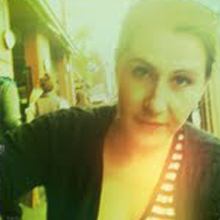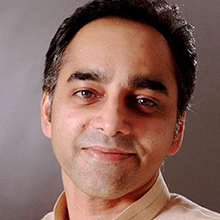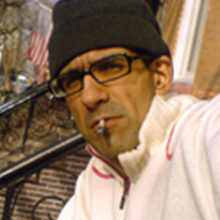Find the Love, End the Conflict
by MOR
This work has been commented by 3 curator(s). Read the comments
Title
Find the Love, End the Conflict
Headline
Find the Love, End the Conflict, Imagine if it was possible.
Concept author(s)
Mahya Soltani; Omnia ElAfifi; Rand Almaeeni
Concept author year(s) of birth
1988; 1988; 1989
Concept author(s) contribution
We divided the job equally on this project and contributed on this project together.
Concept author(s) Country
United Arab Emirates
Designer(s)
Mahya Soltani; Omnia ElAfifi; Rand Almaeeni
Designer(s) year(s) of birth
1988; 1988; 1989
Designer(s) contribution
We divided the job equally on this project and contributed on this project together.
Designer(s) Country
United Arab Emirates
Friendly Competition
Love Conflict Imagination (2010-2011)
Competition category
Visual communication practice
Competition subcategory
web / interactive
Competition field
academic
Competition subfield
student
Subfield description
American University of Sharjah
Check out the Love Conflict Imagination 2010-2011 outlines of Memefest Friendly competition.
Description of idea
Describe your idea and concept of your work in relation to the festival outlines:
We believe that if all the people believe in love and try to find most complicated situations, everything can be solved. Children are known for their innocence and they see conflict but they understand the reason why people cannot live in peace, so they express sadness through their drawings. We bring stories of conflict around the world, told by diffrent characters but the stories are presented as children’s drawing. The concept is that “We” as adults forget love and find it hard to find it so as the the story it is explained through a child’s drawing reminding us to go innocent days and express our feelings through drawings and find love easily and stop the conflict. And imagine if it were possible. Our website shows how we find it hard to find love, people need to search for it and easy to imagine as a kid.
What kind of communication approach do you use?
Children's way, as simple as possible for people to understand. And open their heads and be imaginative.
What are in your opinion concrete benefits to the society because of your communication?
To open up peoples eyes to the conflicts around the world. They may see them everyday but they do nothing about it. Maybe at least think about it. And to those people who don't know about the conflicts going on. Also, to put themselves in these people's shoes and imagine if it were them.
What did you personally learn from creating your submitted work?
It opened our eyes to the conflicts people have around the world. We hear about it everyday but we don't think about what to do to help, even if it is going to be something little.
Also, we learned to start going back and maybe think a little bit like a kid, in terms of being creative and imaginary.
Why is your work, GOOD communication WORK?
We created a website that explains a complicated topic into as simple as possible and easy to navigate.
Where and how do you intent do implement your work?
Social networking websites for example facebook and our own media designer website.
Did your intervention had an effect on other Media. If yes, describe the effect? (Has other media reported on it- how? Were you able to change other media with your work- how?)
Curators Comments

Dr Zoë Sadokierski
A lovely set of heartfelt, animated monologues. The simplicity of the images worked well with the content, although some of them could use some more drafting to make the childlike style look more deliberate. It is difficult to make 'children's style' drawing look authentic, and yet also visually engaging. A different choice of typeface here (something hand drawn, perhaps) would have made the visual style of the whole piece more unified – this typeface (it looks like Impact?) has a very computer-generated feel that clashes with the drawing style. The idea of hiding a word in the image that the viewer can click on to find a happy resolution is good, however it could have been visually more interesting (again, using a hand generated typeface, or hiding the word in a more interesting way than just placing it on top of the image). The use of real voices made these stories all the more engaging.
Ahmed, Shima and Olga's hidden words "tolerance", "share" and "care" make sense, I understand how those are the mental states necessary to resolve the conflict, but I am confused about Shima's hidden word ... who must "compromise"? Should her mother have compromised and not written the article? Or should she compromise and accept that her mother is in prison? This confusion weakens the project – I would strongly suggest rethinking this word.
Overall, a strong submission and a lovely idea in response to the brief. Well done.

Shoaib Nabi
Picasso once said that the most difficult thing to do is to learn how to paint like a child. As we grow older we are always told what to do and not to do. Conflict starts when the first time someone understands the meaning of the the word "No" and the dialog continues in form of "why", "why not" ... perhaps it is so because we all are looking for answers that makes sense and not necessarily permissions.
I can go with the notion of your teams statement that "If all the people believe in love and try to find it even in the most complicated situations, everything can be solved." That may work to a certain degree if you are fortunate to be like minded - that is not always the case and too many people may want a share of what you may love. Conflict shows it ugly face through the economics of supply and demand and then reality bites.
Your website is interactive but could give us a lot more information if one wants to explore at their discretion - because of your choice of medium. The stories are touching and personal which makes them work. They are concise and given equal weight but could be far more effective if they were voices of children of 10 or 12 years old and not adults. Also the vocabulary use could have some variation based on the regions. Have to work on your sound quality; echos, clicks are distractions takes away from a very engaging entry. I can see this project expand and have a active web presence.

Sandy Kaltenborn
Well well well - We fell in love with this work the first time we looked at it. Very simple and touching stories. and we would have loved to see & hear 96 more of these kind of stories…
We specially like - even though this might have been not on purpose. That the sound recording is not very professional. The side noises give the whole thing some further "authentic" feeling, as if recorded tapes had been send to you for this project. the 4 stories entangle political and private issues on a level of children perspective, which gives the whole some kind of universal gesture. we all want to see these problems solved - on the private and on the political, global level.
The weird thing is that your slogan "find the love / end the conflict" nearly sounds cynical to us. It's obvious that "finding love" does not solve all of the touched/mentioned conflicts. We are not at all nice people who just lost their love. We are in permanent conflict of differing interests - and conflict is not necessarily something negative at all. Conflicts need negotiation and sometimes struggle to be "solved".
But to negotiate a conflict one has to first see and recognize the other (side). This is where we see the strength of your project: in its simplified, reduced language it calls for sensitivity and awareness in conflicts. We are not sure if it was the right decision to force the main part (the 4 stories) into the bracket of this competition wordings (love, conflict and imagination). "find the love / end the conflict" sounds like an instruction which leaves the audience with more questions behind than it would show a direction. so - we like the stories as they open up larger issues than one personal story of a child. We dislike the slogan, the logo and all the other stuff we can click on the website. we believe the work would become stronger if you would have many more stories.
Imagine a website which you enter and directly see 100 kids just as you did show ahmed, shima, olga and noura … then just the statements from them. That's it. Leave the "solution" to the audience, let the audience make up their own mind what is to be done!
The transnational, transcultural and transreligious aspect of your work and your team, is stronger than the slogan at the end of the 4 statements - itself it's a strong(er) call for "love" to end "conflict"…
